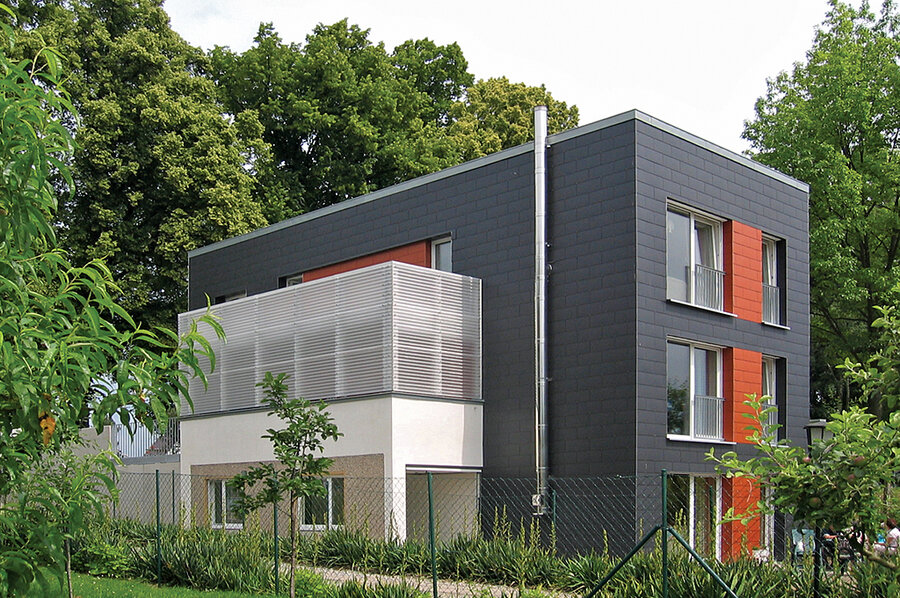Germany: Recycling communist housing blocks into modern homes
Loading...
| Dresden, Germany
• A local, slice-of-life story from a Monitor correspondent.
One of the latest homes architect Norman Hose built in the small eastern German village of Mühlhausen looks as modern and attractive as any of his others, its huge windows letting the sun in. With one exception: It had once been one of millions of shoebox-shaped apartment blocks that sprouted on the periphery of such cities as Dresden, Berlin, Magdeburg, and Rostock in communist East Germany. Built hastily to give workers a home after World War II, most were deserted after the Berlin Wall fell.
Built by bolting together prefabricated concrete slabs, or Platten in German, the Plattenbaus is as much a trademark of the German Democratic Republic as the Trabant car. Because the apartments had water and central heating, were easily manufactured, were long-lasting and cheap, people loved them.
But the end of communism in East Germany brought a crumbling economy and a mass exodus, leaving behind 3.1 million empty apartments, or 15 percent of the housing stock. The German government has spent €2.6 billion (US$3.5 billion) to raze 300,000 apartments. It plans to spend another €3 billion (about US$4 billion) to demolish 200,000 more.
One day, watching cranes demolish the blocks’ concrete slabs, Mr. Hose had an idea. “I went to a demolition firm and said, ‘We can use the slabs, and that way you won’t have to pay for getting rid of them,’ ” recalls Hose. “They said, ‘Just take them.’ ” For €5,000 (US$6,973), he had 58 Platten transported to Mühlhausen and transformed them into a stylishly modern abode.
Recycled homes such as Hose’s are the new kids on the block of the German landscape. They cost 30 percent less than a conventional house, take only days to put up, and save considerable energy in construction materials.
“We simply can’t afford to throw away everything we’ve constructed anymore,” says Hose. “There’s far too much energy involved in those old concrete [slabs] – in their construction, in their destruction, in their transport.”





